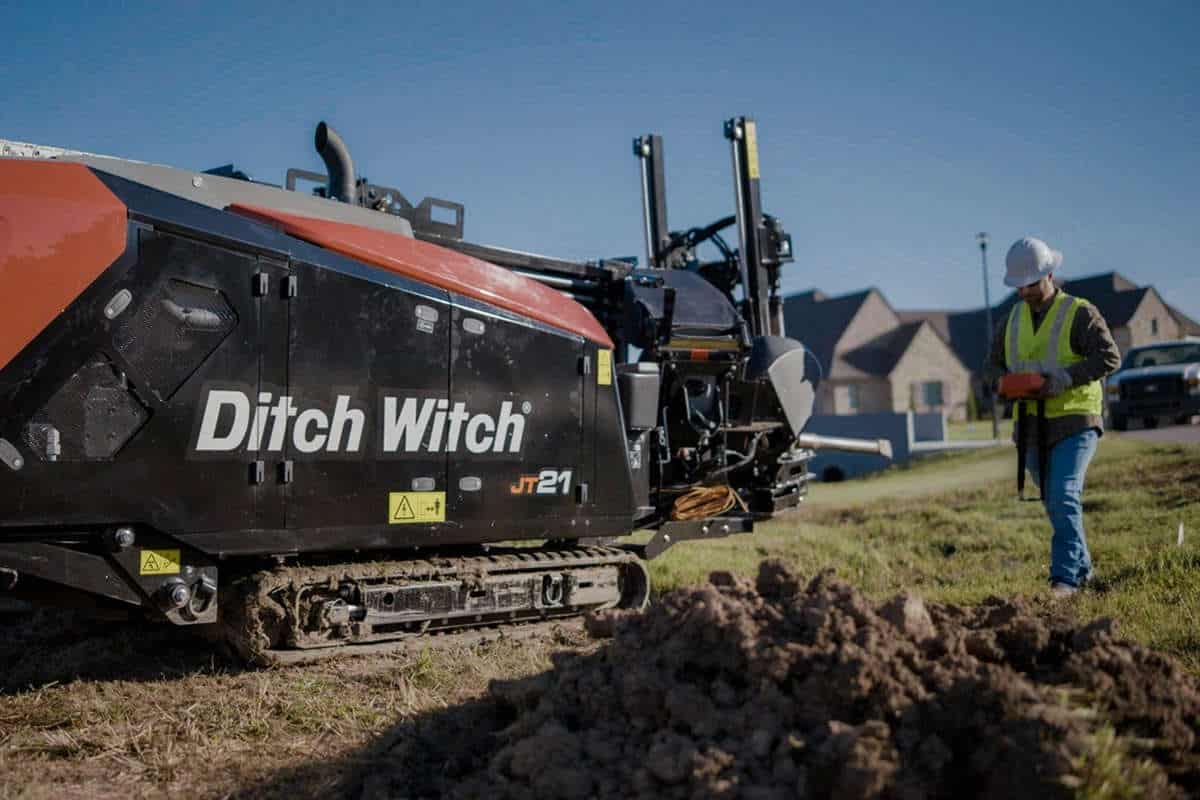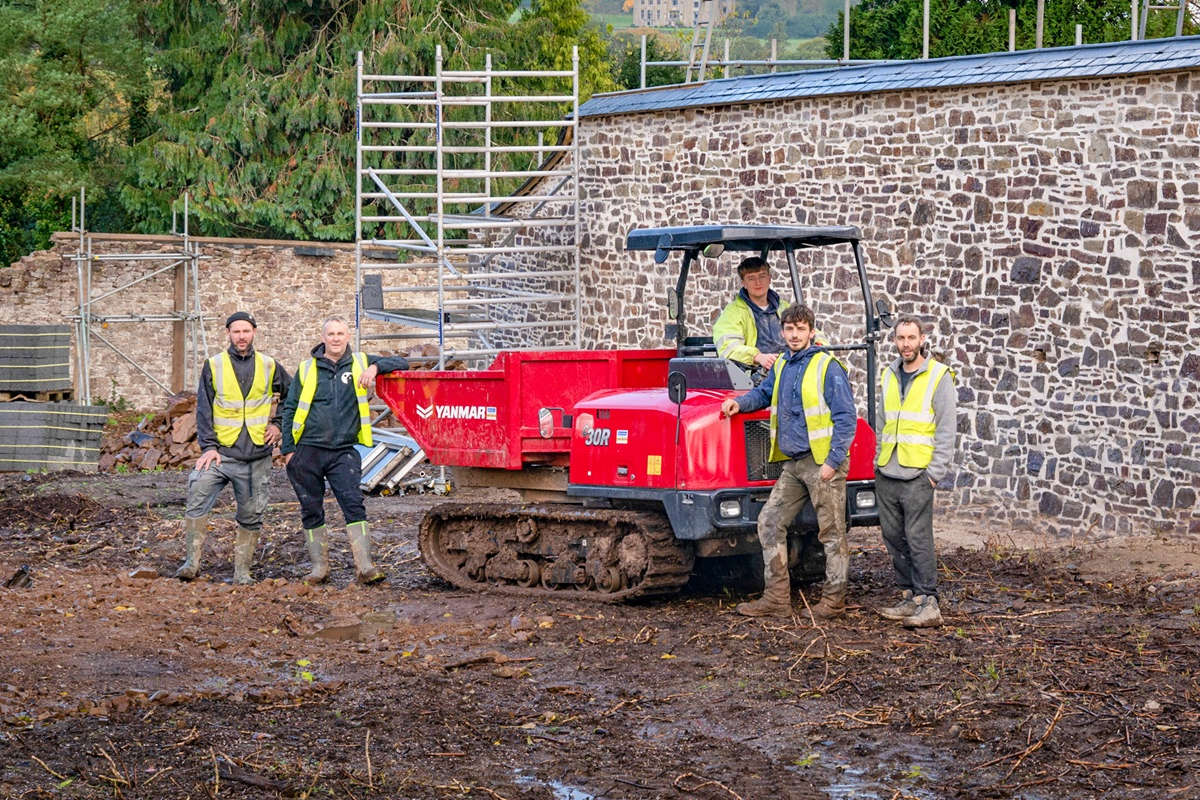Staying Ahead of the Curve: John Deere Adds Slope Control to K-Series Dozers
As technology continues to shape the utility construction marketplace, manufacturers are keeping pace in not only refining the most high-tech options, but also providing an array of options to ensure that customers get a machine that best suits their needs. John Deere recently debuted its Slope Control grade management technology on its 450K, 550K, 650K and 750K dozers, as well as its 700L and 750L models, that provides an option for contractors who are looking for the added productivity, efficiency and reliability that a grade management system can provide.
To dive a little deeper into Slope Control, Utility Contractor chatted with Matt Goedert, solutions marketing manager for John Deere. Goedert gave us a rundown of the technology, how it works, and who might benefit from using it. He also gave us some insight into the new undercarriage for Deere’s larger dozers.
Tells us a little about Slope Control and how it works.
Slope Control is our entry-level grade control system that automatically adjusts blade position and maintains desired slope for the operator automatically. Slope control fills a gap for operators who want less complex technology. In the construction industry, there are a lot of different control systems, whether it is 3D with a satellite system or a local positioning system (LPS) with a total station. Slope Control is an easy-to-use system that doesn’t require a base station or a total station, or any other external reference.
With Slope Control, an operator enters the desired slope, and the inertial measurement unit (IMU)-based system will automatically maintain that slope, whether it’s a cross fall slope, which is left to right of the blade, or main fall slope, which is fore and aft of the machine.
Slope Control uses IMUs on the body of the machine or the frame, and on the blade. The IMUs measure position on the X, Y and Z axes, so we know the slope of the body and the blade at all times, allowing the operator to program in a slope and the machine will maintain that automatically.
What does this mean for the end user? What advantages can a contractor expect to gain by having Slope Control?
Slope Control puts another tool in the contractor’s toolbox. It improves the accuracy on the job site, especially for less experienced operators. When we talk to construction company owners today, they’re having an extremely hard time trying to find skilled operators. Slope Control helps less experienced operators get into the machine and gets them grading smooth and accurate passes right away. Essentially it allows the operator to get the job done quicker.
There are many different applications where Slope Control shines, particular landscaping. A lot of landscaping jobs are engineered and they’re generally less complex, which really lends itself to adopting Slope Control. In particular, landscapers are concerned about drainage, and if you want to maintain positive drainage – whether it’s landscaping, residential lots or staging areas for equipment or materials on the job site – you can dial in say a 2% slope and maintain that over a large area.
And since Slope Control maintains the blade automatically for the operator, it ensures that the grade is going to be smooth and not choppy to ensure water isn’t pooling and it’s flowing away from the job site. And, since there is no external reference, Slope Control can be used inside buildings or under tree cover.
What options or configurations are available for contractors?
There are two operating modes that operators can use.
No. 1 one is Target Mode. Target Mode allows the operator to enter a target. If he or she wants to maintain a 2% cross slope, for example, the operator can enter that, turn it on, and the blade will automatically maintain that.
The other operating mode is Joystick Mode, which is an awesome feature for both inexperienced operators and experienced operators because joystick allows you to operate the machine manually. Once you get the blade to the desired slope, Joystick Mode will automatically maintain that slope of the blade. That can be particularly helpful in a situation where there might be a specification, like if you are cleaning out a ditch, for example.
What models are available with Slope Control?
Slope Control is available from the 450K all the way up to the 750 K, as well as the 700L and 750L. And, we are listening to customers’ feedback and continuously evaluating what other machines we want to expand that to.
Technology has been constantly evolving. Can you tell us a little about how it has changed in recent years and what impact it has had on the construction industry?
Technology is definitely a hot topic. Looking back just 5 or 10 years, jobsites look completely different today with technology being used to the utmost. Technology often eliminates the need for grading stakes, and the need for the operator to continuously get in and out of the cab to check the grade. Everything is right inside the cab, which improves efficiency and lessens the need for additional ground crew costs.
What tips can you give us to help an operator get the most out of Slope Control?
Slope Control is calibrated from the factory when a machine is ordered, but we also have upgrade kits. If a customer has an existing machine, they can talk to their dealer about getting a kit installed, which lessens the initial purchase price of getting into the technology. When using Slope Control, the main thing is just getting familiar with using the two operating modes, whether it’s joystick mode or target mode, and understand the differences between those.
What sort of training is available?
Our dealers provide training, so if a customer is unsure about the technology, the dealer can help them get the benefit of the technology. I encourage customers to reach out to their dealer, maybe get a demo, or attend a training class to really understand the technology before they make that initial investment. Oftentimes customers may not realize the value of technology until they have been able to see it first-hand.
In addition to training, dealers provide technical support as well as stocked components if a repair or replacement is needed. Additionally, the machines come with remote support and wireless data transfer, which allows the dealer to troubleshoot a potential problem without having to visit the jobsite, or allows operators to update plans without having to carry around a USB stick.
What if a customer wants a more robust system for more complicated jobsites?
Slope Control is our entry-level solution, but on 650K, 700L, 750L, 850L, 950K models we have our SmartGrade option available as well, which is John Deere’s mastless, integrated grade control system. If a customer finds they are taking on more complex jobs, they can upgrade from Slope Control to SmartGrade without having to buy a brand new machine.
With both systems you get integrated technology with components that are protected within the machine, so if you’re working around obstacles or trees, you don’t have a mast hanging on the blade or cables exposed that could potentially get snagged.
So one other recent change for John Deere has been an updated undercarriage for the larger dozers. Can you tell us a little about that?
On our largest dozer, the 1050K, we introduced an upgraded suspended, double bogey undercarriage. It uses rubber isolators that dampens shock or vibrations encountered on the jobsite. In our testing, we saw up to a 75% reduction in vibrations that the operator feels inside the cab, which helps lead to an increase in productivity because the operator isn’t being jolted around inside the cab. The suspended, double bogey undercarriage is now standard on the 1050K. Additionally, the 1050K has a redesigned blade with an increased width and improved radius that improves capacity and pushing power. Tags: John Deere, July/August 2021 Print Issue





